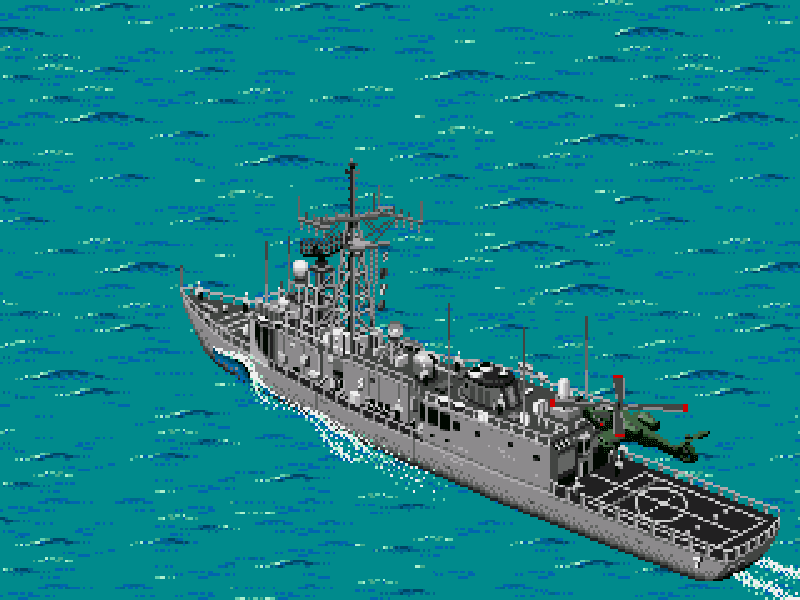
Desert Strike: Return to the Gulf
"Desert Strike: Return to the Gulf" is a notable shoot 'em up video game developed and published by Electronic Arts (EA) in the early 1990s. The game, inspired by real events from the Gulf War, gained significant attention for its mix of action and strategy, as well as for its timely, albeit controversial, subject matter.
Key Features of Desert Strike:
-
Gameplay and Setting: The player pilots an AH-64 Apache helicopter, undertaking various missions in a fictional Middle Eastern setting. The game is known for its strategic elements blended with action-packed shoot 'em up mechanics.
-
Isometric Perspective: Unlike many shoot 'em ups that use a top-down or side-scrolling view, "Desert Strike" is presented in an isometric perspective, adding depth to its visuals and gameplay.
-
Mission-Based Structure: Players must complete a series of missions, including destroying enemy installations, rescuing hostages, and capturing enemy personnel, all while managing resources like fuel and ammunition.
-
Realistic Helicopter Dynamics: Lead designer Mike Posehn, inspired by "Choplifter," aimed for a realistic portrayal of helicopter movements, using a camera system with momentum and 3D modeling for vehicle sprites.
-
Strategic Elements: Players must carefully plan mission routes for efficiency, as the helicopter has limited armor, fuel, and ammunition. The game requires managing these resources while outmaneuvering enemies.
-
Diverse Weaponry: The Apache is equipped with a machine gun, Hydra rockets, and Hellfire missiles, each with varying levels of power and ammunition limitations.
-
Different Co-pilots: Players can choose from different co-pilots, each with unique skills. The best co-pilot, Lt. Carlos 'Jake' Valdez, can be rescued during a mission.
-
Four Main Missions: The game is structured around four main missions, each with specific objectives and escalating challenges.
Reception and Legacy:
-
Commercial Success: "Desert Strike" was a bestseller and became one of Electronic Arts' highest-selling games at the time.
-
Critical Acclaim: The game received favorable reviews for its enjoyable gameplay, strategic depth, graphics, and sound. It was praised for its balanced mix of action and strategy.
-
Controversy: Due to its proximity to the Gulf War, some commentators criticized the game for potentially being in poor taste. The game's plot and antagonist, General Kilbaba, were seen as thinly veiled references to Saddam Hussein and the Gulf War.
-
Multiple Platforms: After its initial release on Sega Genesis, "Desert Strike" was ported to various other platforms, including the Super Nintendo Entertainment System (SNES) and Amiga.
Conclusion:
"Desert Strike: Return to the Gulf" stands out as an influential title in the early '90s video game landscape. Its unique combination of action, strategy, and timely subject matter captured the attention of gamers and critics alike. The game's success led to several sequels, each continuing the series' signature gameplay style. "Desert Strike" remains a memorable and significant game, both for its engaging gameplay and the discussions it sparked about the intersection of video games and real-world events.

kittytoe
- 02-03-2021 14:29:07